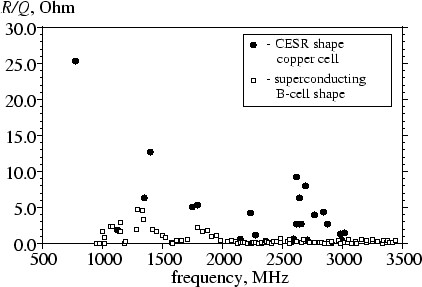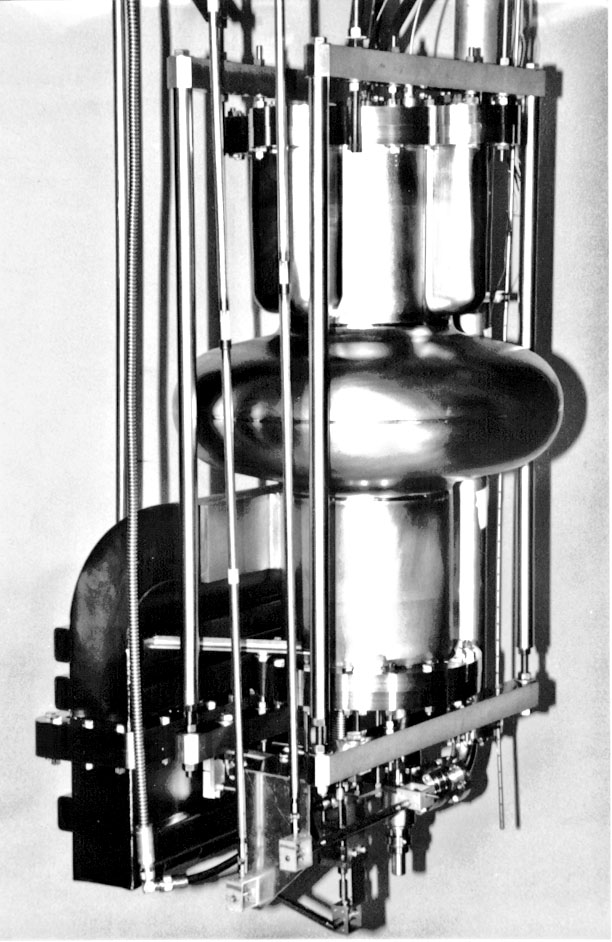B-cell 500 MHz Superconducting Cavity
A new low impedance superconducting cavity was initially proposed for the B-factory project at Cornell
[1-3]. Later on this cavity became a part of the CESR Luminosity Upgrade Program. The B-cell cavity is a single-cell bell-shaped accelerating structure fabricated from niobium sheets using spinning and electron beam welding techniques (while B-cell cavities are manufactured by a company, Cornell has capabilities to
fabricate smaller cavities). It is so-called single mode cavity, i.e. the cavity with a very big beam tube aperture (24 cm), so that only one mode is trapped inside the cell, namely fundamental TM
010mode. Resonant frequencies of all higher-order modes (HOMs) are higher than cut off frequencies of cavity beam tubes. This allows all HOMs to propagate along the beam pipe toward the special
HOM power absorbers. The cavity has a special feature, fluted beam tube (to the left on the
photo ). It allows coupling to the two lowest dipole modes. The smooth, open geometry significantly reduces impedance of the cavity HOMs The RF power is coupled to the cell via rectangular waveguide of a reduced height. Some cavity parameters are listed in the table below.

plot compares HOM impedances of the B-cell and a conventional copper cell
Selected parameters of the B-cell.
| Resonant frequency |
499.765 MHz |
| R/Q |
89 Ohm |
| Q0 |
109 |
| Qloaded |
2x105 |
| Operating temperature |
4.5 K |
| Accelerating field |
6 to 10 MV/m |
| Accelerating voltage |
1.8 to 3 MV |
References
- H. Padamsee, et al. Design Challenges for High Current Storage Rings. Particle Accelerators, 40 , 17-41 (1992).
- J. Kirchgessner. The Use of Superconducting RF for High Current Applications. Particle Accelerators, 46 , 151-162 (1994).
- D. Moffat, et al. Preparation and Testing of a Superconducting Cavity for CESR-B. InProceedings of the 1993 Particle Accelerator Conference,763-765.


